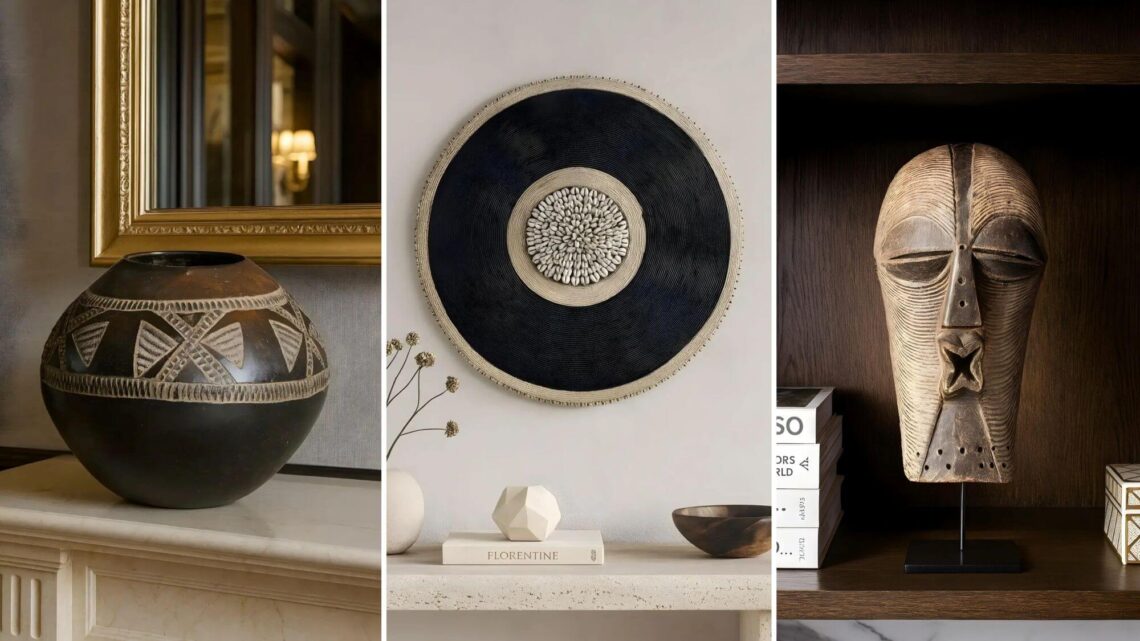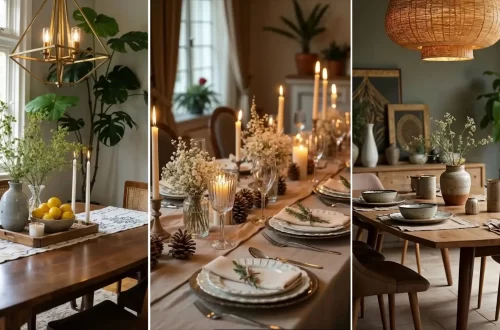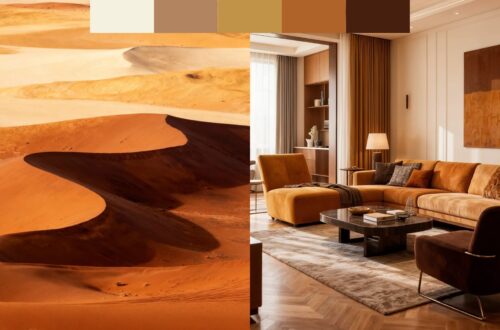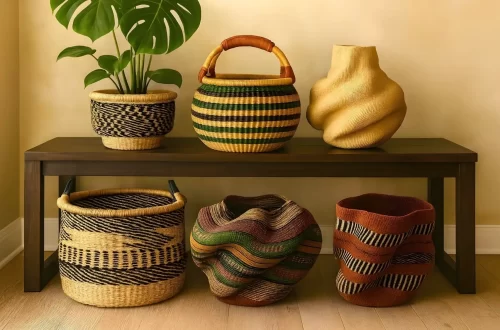Not long ago, I discovered that there’s a massive difference between decorating and creating a home that means something. A real home that speaks to your life, your experiences, and your beliefs. So when it comes to selecting pieces that stand out, namely your home decor showpieces, it feels even more important to choose items that truly resonate.
This is where authentic, handcrafted pieces from across Africa come in for me. I’m talking about items with genuine history and purpose. Pieces that carry generations of artisans and cultures. These are the pieces that feel right to me, and in here, I’ll tell you exactly why.
Jump to:
- 1. African Shields: More Than a Statement Piece
- 2. Oversized Art Baskets: Woven Masterpieces
- 3. Namji Dolls: Generational Wealth
- 4. African Ceramic Pots: Ancient Knowledge, Functional Art
- 5. Wall Basket Collections: Conversations in Weave
- 6. Kuba Cloth: Textile as Personal Expression
- 7. African Masks: Sacred Art Deserves Sacred Respect
1. African Shields: More Than a Statement Piece
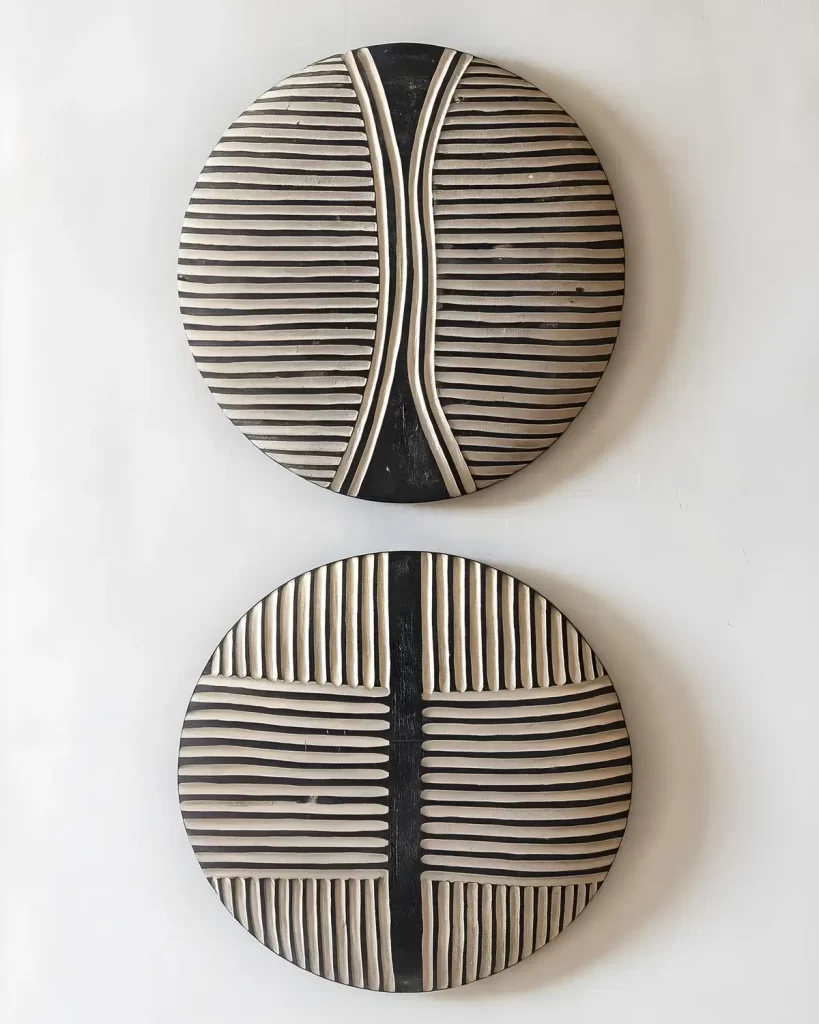
Shields weren’t created for decoration: they were functional. They protected people, yes, but they also carried symbolic meaning. The patterns, the materials, the way they were crafted—all of it communicated something about the person who carried it. Status, lineage, and connection to their community.
Today, when you place a shield in your home, you’re acknowledging that this object was made with purpose. That’s what makes them work so beautifully as home decor showpieces. They’re not trying to be beautiful—they simply are.
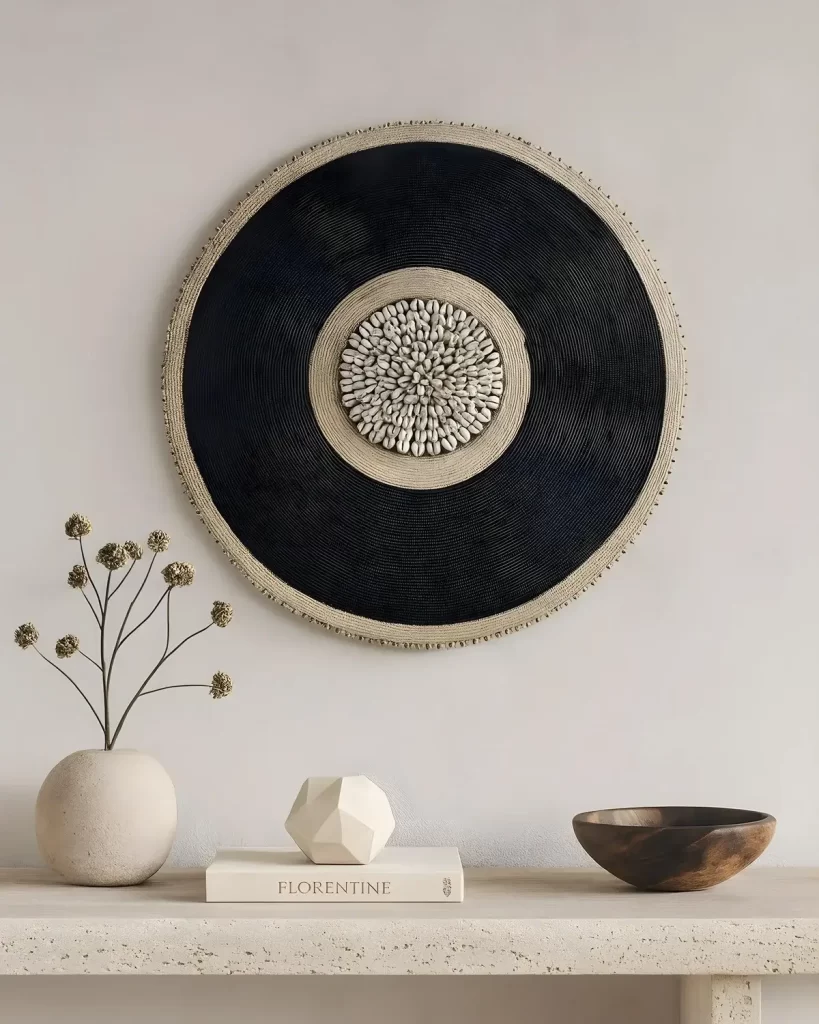
Here’s what you’ll find:
- Dark wooden shields with white geometric carvings – lines that represent unity, protection, and connection.
- All-white shields – These create powerful contrast and signify specific roles or status within communities.
- Beaded shields with cowrie shells – Cowrie shells once held monetary value across African cultures. They represent wealth and significance. The beadwork covering these shields represents hours of meticulous work.
Whether you style a large shield as a focal point or multiple shields arranged together, the result will change the energy of the space.
2. Oversized Art Baskets: Woven Masterpieces
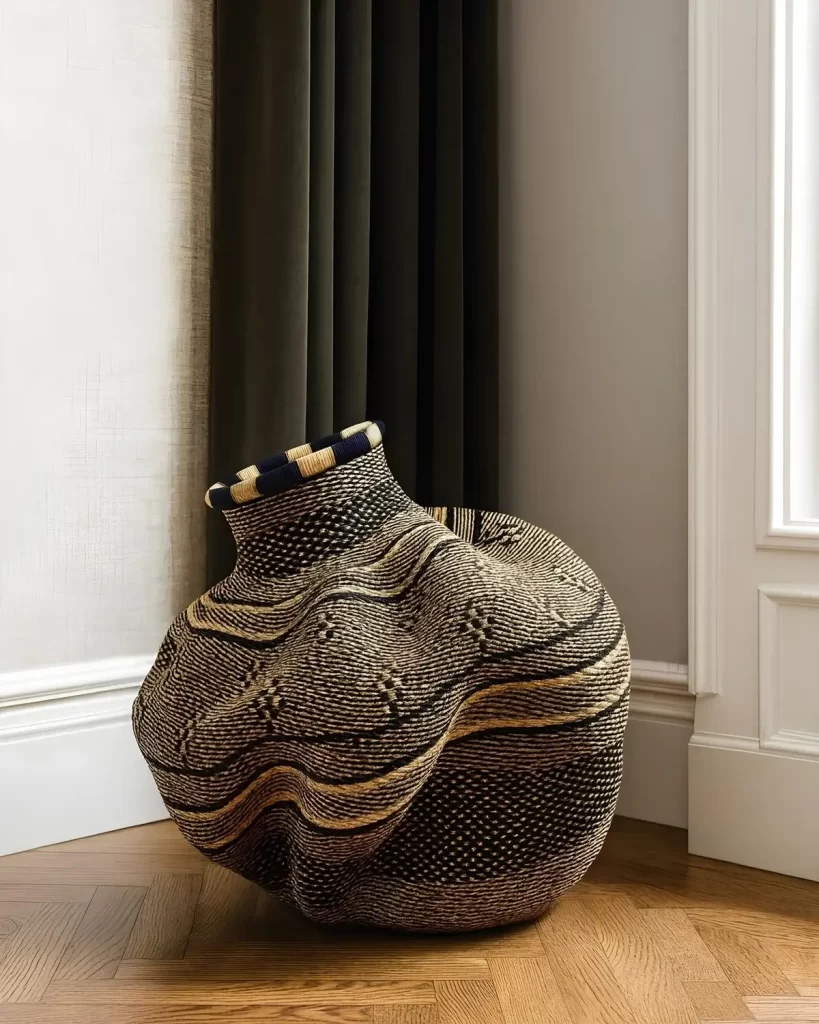
Ghanaian oversized art baskets represent a centuries-old tradition of weaving that carries cultural knowledge forward.
These baskets are woven from elephant grass—a material that connects directly to the land where it grows. The weaver understands this material intimately. They know how it bends, how it holds, how it ages. They’ve learned this from watching others weave, from practicing, from understanding the relationship between hand and material.
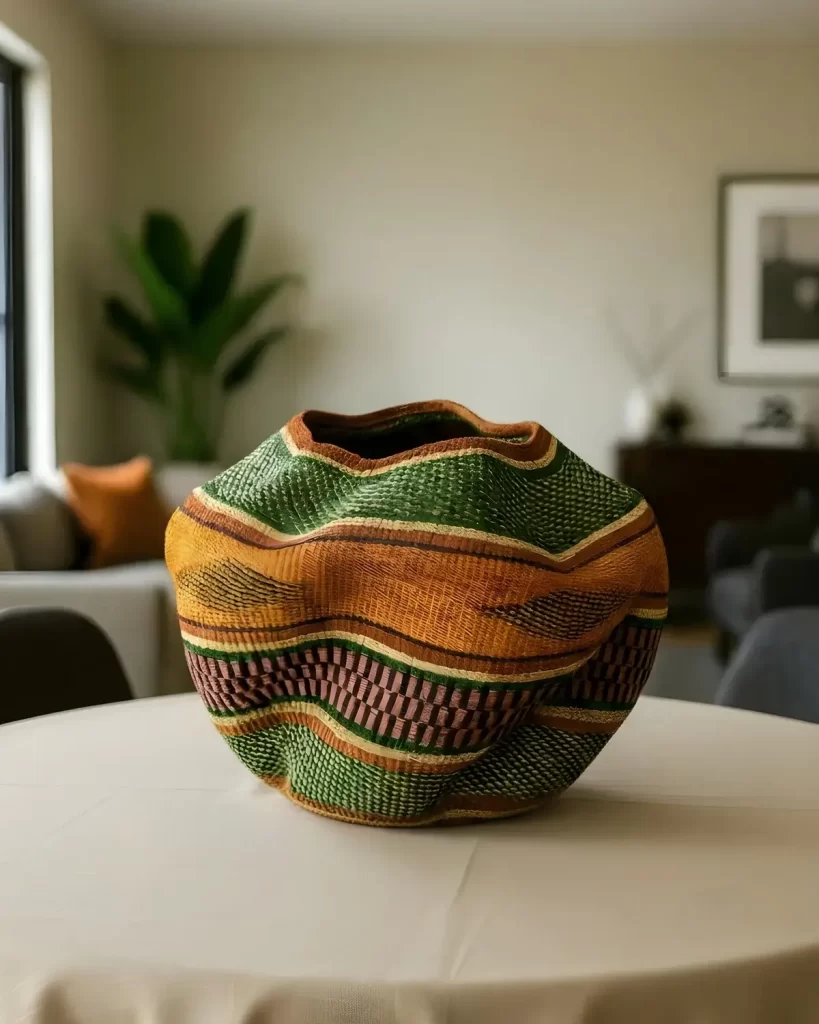
The designs speak to their origins:
- Seashell patterns – Referencing coastal influences and trade routes
- Organic jar and pot shapes – Echo the functional vessels these baskets were designed to complement
- Wavy, flowing forms – Represent movement, water, life itself
These are home decor showpieces that carry the landscape of Ghana within them.
You May Also Like: 45 Vibrant African Baskets to Quickly Beautify Any Room
3. Namji Dolls: Generational Wealth
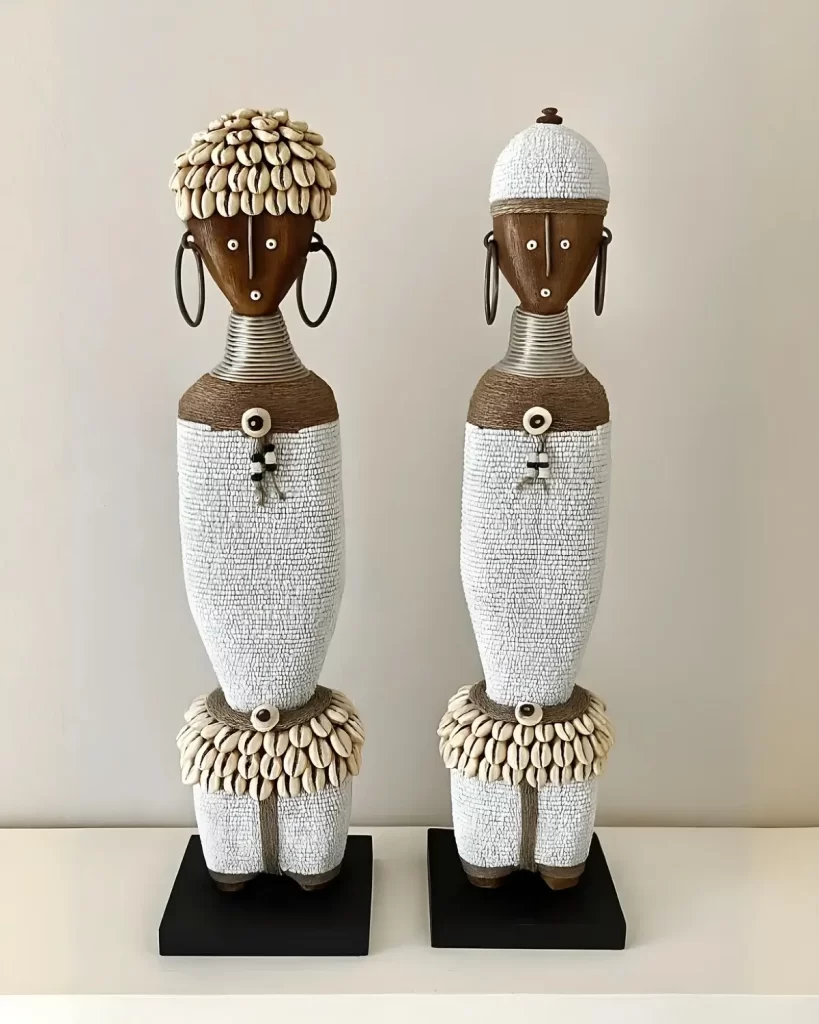
Namji dolls from northern Cameroon are perhaps the most emotionally complex pieces on this list. Beyond being objects, they’re vessels for family history and love.
Traditionally, a Namji doll was passed down. Grandmother to mother to daughter. And with each generation, it changed. The new caretaker would add beads, shells, metals, cloth—pieces that meant something to them. The doll became a physical record of family love across generations.
That’s why these home decor showpieces resonate so deeply with me. They represent family, and prove that what we create with our hands matters. It endures.
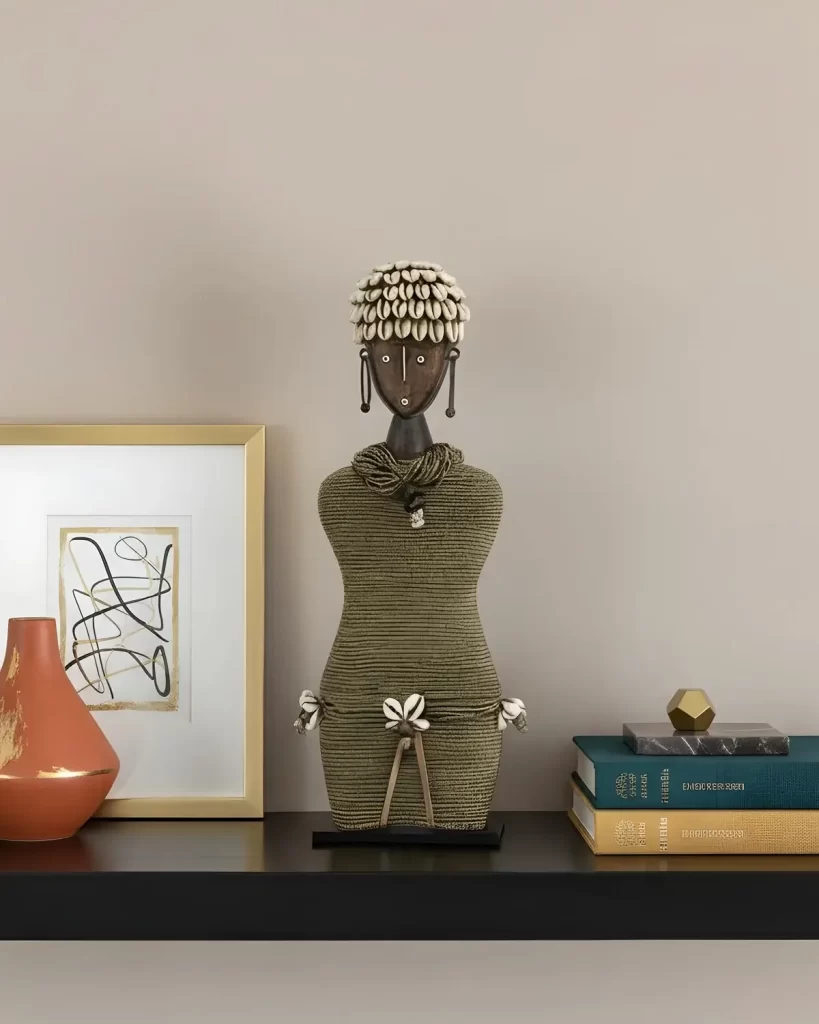
What makes them significant:
- Carved from African Rosewood – A material chosen for its beauty and durability, meant to last generations
- Decorated with meaningful materials – Beads, shells, coins, cloth—each element selected for its significance
- Exchanged during life’s biggest moments – Given at births, weddings, major celebrations—always as blessings
I picked up two pieces at a market in Douala. They have aged brass tones that complement my Parisian apartment. But more than that, they remind me of the bond they were created to honor.
4. African Ceramic Pots: Ancient Knowledge, Functional Art
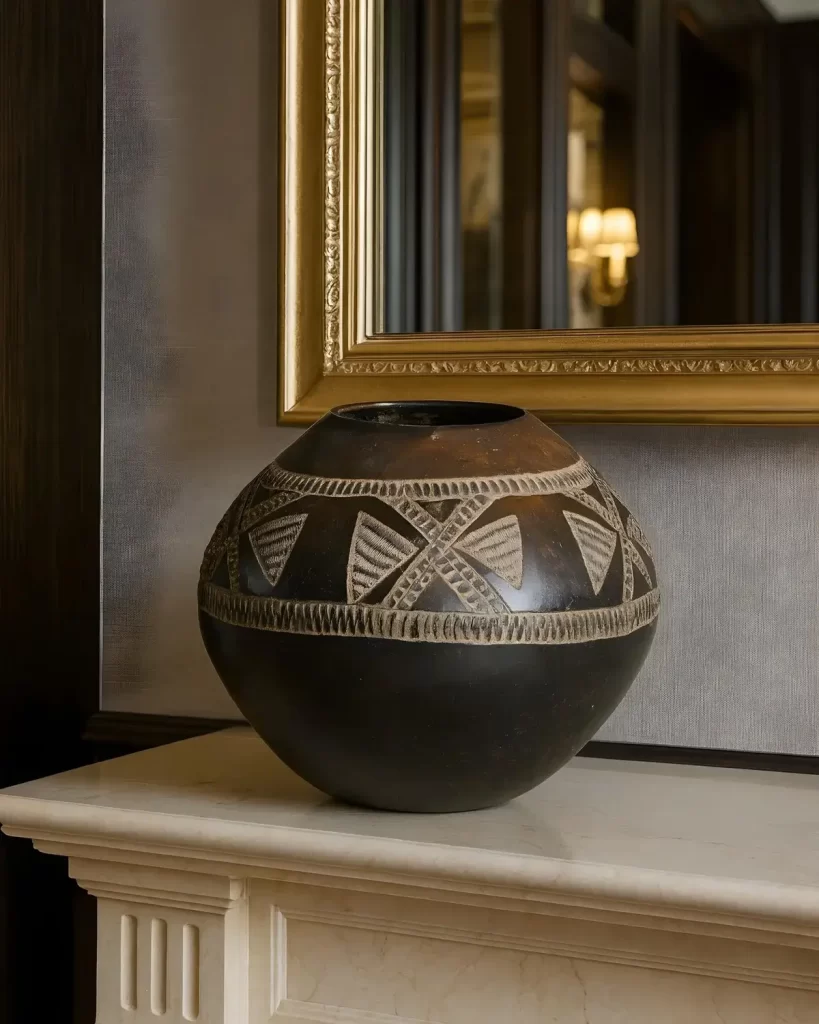
African ceramic pots are time capsules. They hold within them thousands of years of refined knowledge.
Every pot—whether it’s a Zulu beer pot, a Nupe water pot, or a Lobi cooking pot—was created to solve a specific problem. How do you store water in a tricky climate? Can you cook over fire without the vessel cracking? How do you transport precious goods? These questions were answered through experimentation, failure and success.
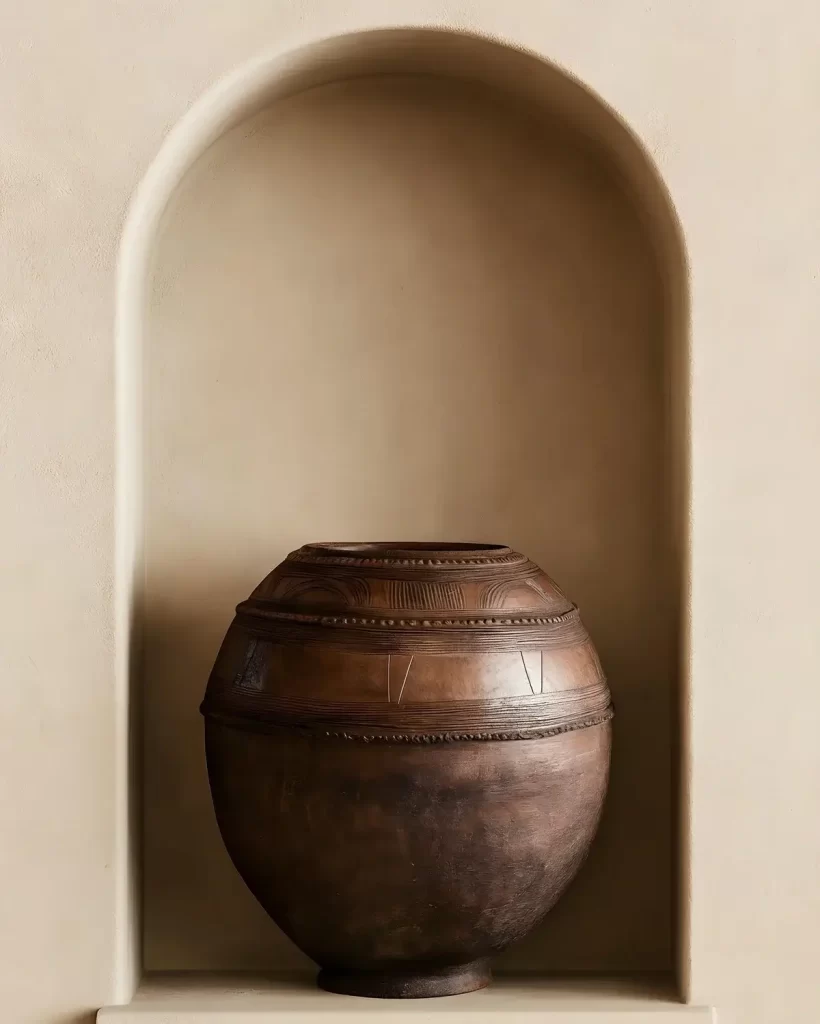
Different styles carry different stories:
- Zulu beer pots – Rounded, generous shapes that distribute heat evenly, designed for communal gatherings
- Nupe water pots from Nigeria – Refined proportions that allow for easy carrying while maximizing capacity
- Lobi cooking pots – Distinctive forms that work with specific cooking methods passed down through families
- Regional variations – Each reflects the landscape, climate, and needs of the people who created them
These home decor showpieces are incredibly beautiful, but they’re also true bowls of knowledge.
You May Also Like: African Pottery: A Timeless Treasure | 7 Remarkable Styles
5. Wall Basket Collections: Conversations in Weave
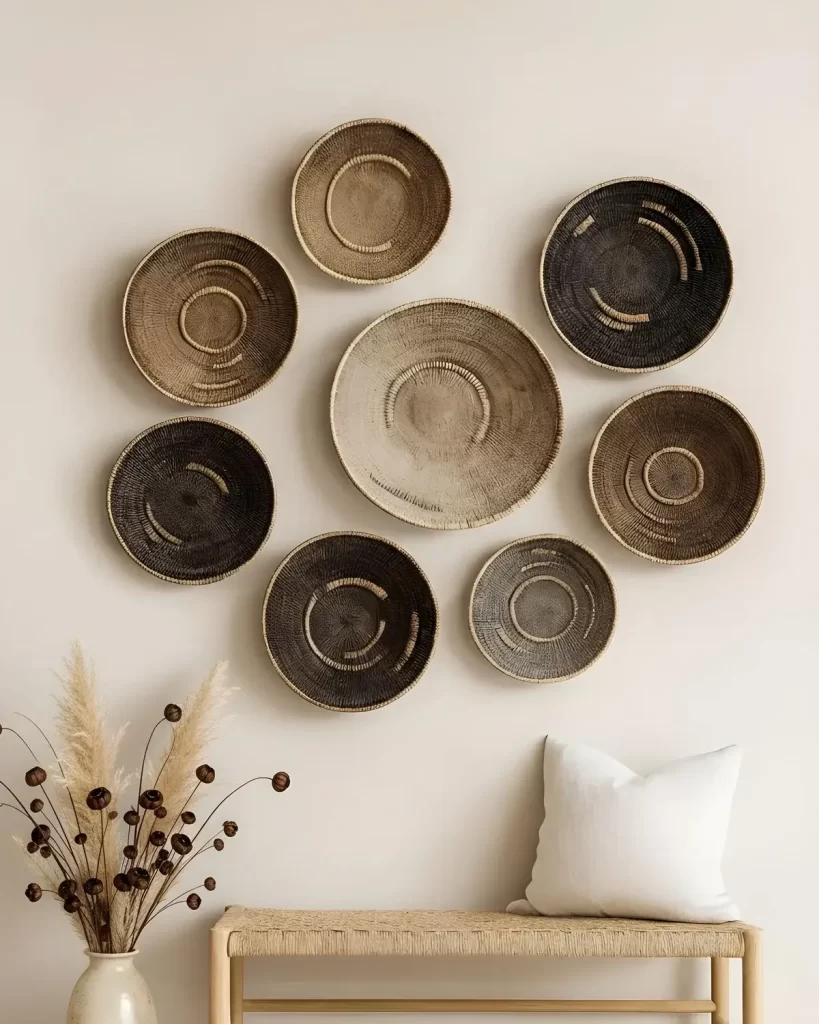
Wall baskets work beautifully as home decor showpieces because each one is distinctly regional. A Tonga basket from Zambia doesn’t look like a Makenge basket from Rwanda. The weaving technique is different. The geometric patterns are different. Even the natural dyes come from what’s locally available.
That’s what I appreciate about arranging multiple baskets together on a wall. It’s like displaying the actual diversity of weaving traditions across the continent. Each basket represents real people, real techniques, real places.
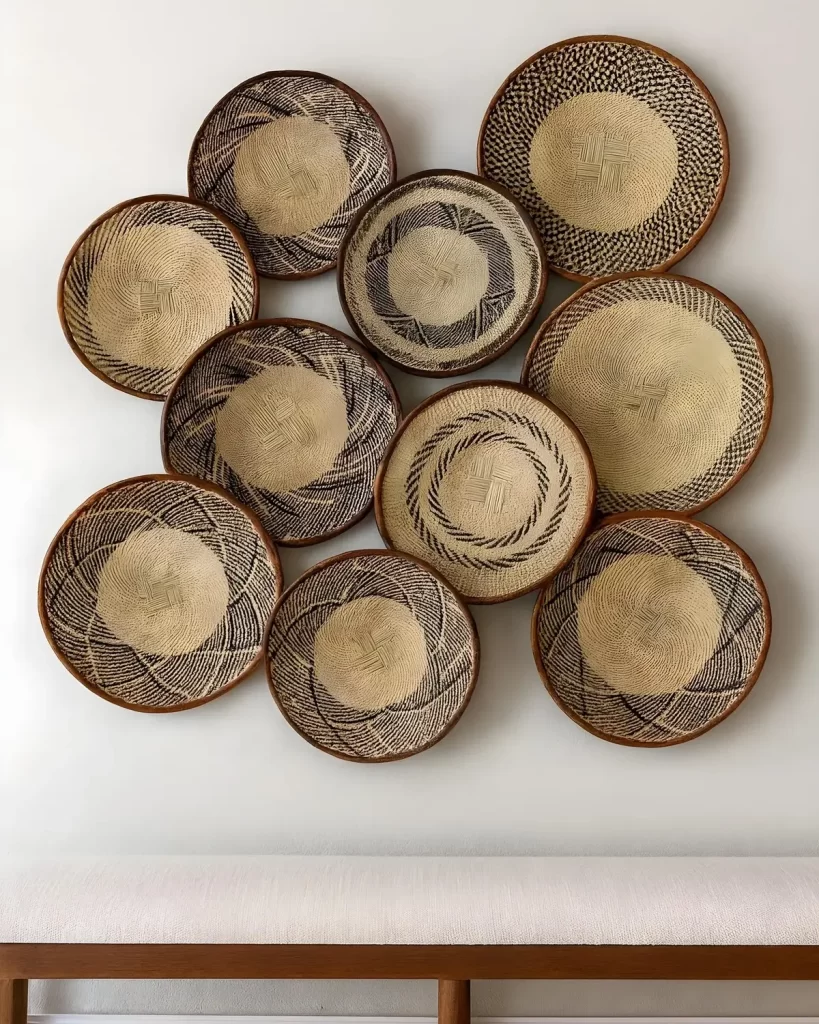
Regional wall basket options:
- Tonga baskets from Zambia – Made by the Tonga people from ilala palm, the geometric patterns reflect the landscape and cultural aesthetics of the region
- Makenge baskets from Rwanda – Coiled with precision, the tight weaves represent the patience and skill valued in Rwandan craft traditions
- Bolga trays from Ghana – These pieces, made in a region of master weavers, are made to be oversized statements.
The approach: When you arrange baskets together, you’re creating a statement about diversity and intention. You’re saying that each piece matters individually, and together they create something greater.
You May Also Like: The 11 Top Brands for Stunning African Wall Baskets
6. Kuba Cloth: Textile as Personal Expression
Kuba cloth from the Democratic Republic of Congo is textile art where personal expression is literally the point.
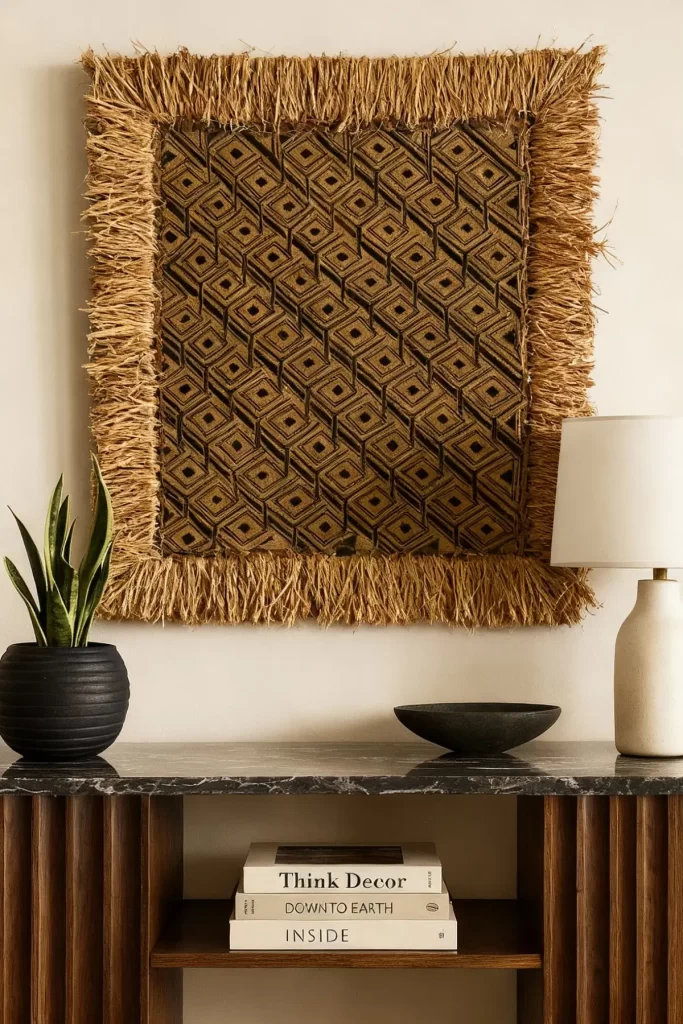
In Kuba Kingdom tradition, weavers and embroiderers were given freedom to create within a form. The base was always handwoven raffia. But what happened after that? That was up to the artist. They could stitch different fabrics, create different patterns, express their own vision. No two pieces are identical because no two artists are identical.
In a world where so much production is standardized, Kuba cloth insists on individuality. It says: your vision matters. Your hand matters. Your creativity is the whole point. And that’s what makes exceptional home decor showpieces.
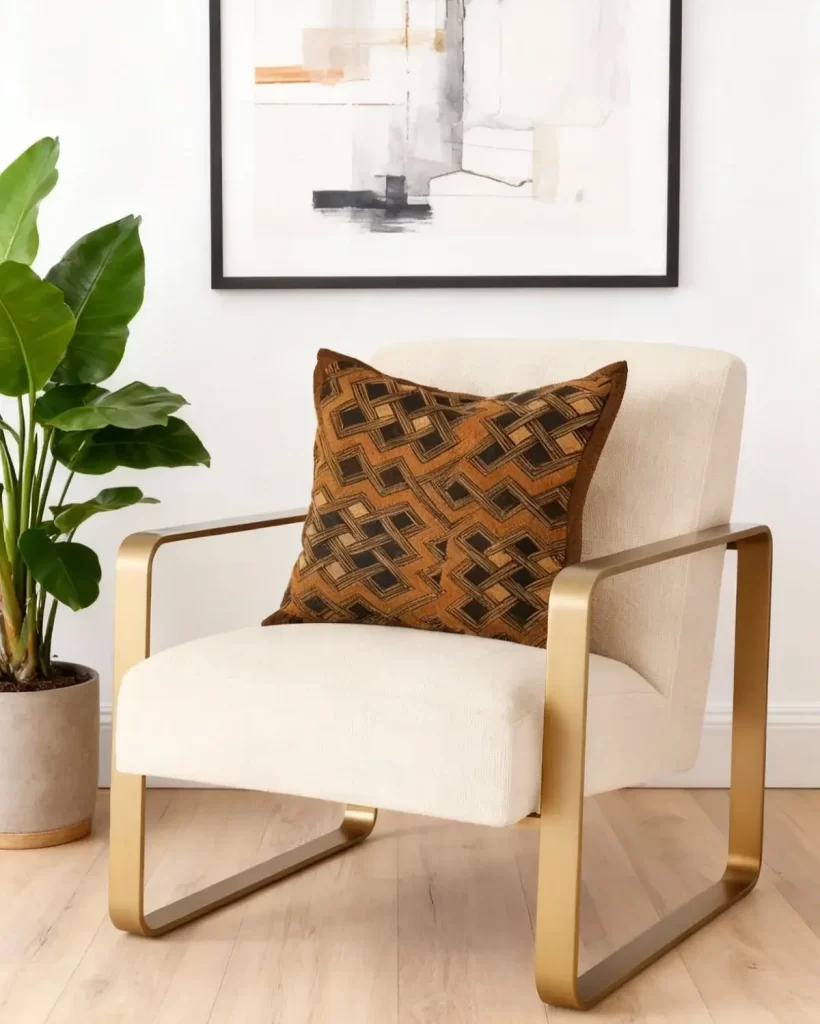
Ways to style it in your home:
- Hung as wall art – They demand to be studied, the way you’d study a painting in a gallery
- Transformed into pillow covers – The texture and design become part of your daily tactile experience
- Framed and positioned – This allows light to play through the layered fabrics, revealing new details over time
Kuba cloth commands attention because it was made to be seen. The artist poured their individual vision into every stitch.
You May Also Like: Kuba Cloth Is Pure Art — Here’s How to Showcase It
7. African Masks: Sacred Art Deserves Sacred Respect
Any genuine exploration of meaningful home décor must address African masks. And I have to say this clearly: these are not decoration.
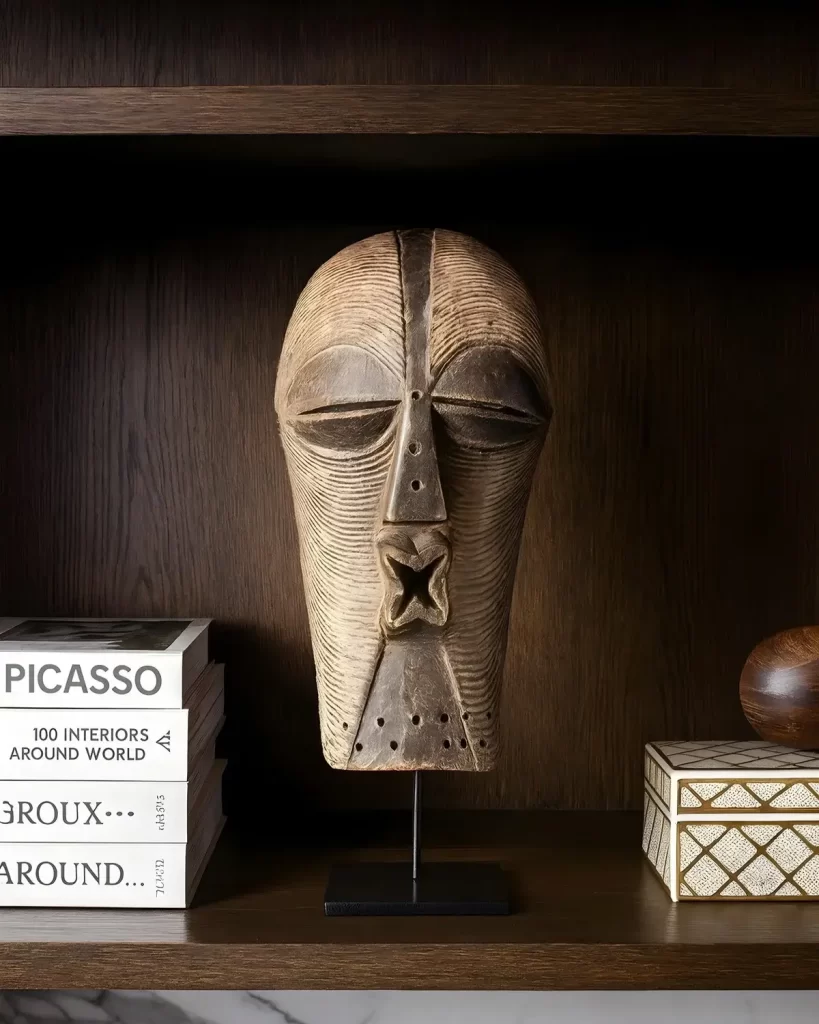
Masks are sacred objects. In African traditions, they embody spiritual power. They bridge the physical and the divine. The people who carved them held special knowledge and status. The people who wore them underwent transformation. They are a key part of ceremonies and traditions.
When you bring a mask into your home, you need to understand its origin. You need to know what it meant. Because a mask is a spiritual experience.
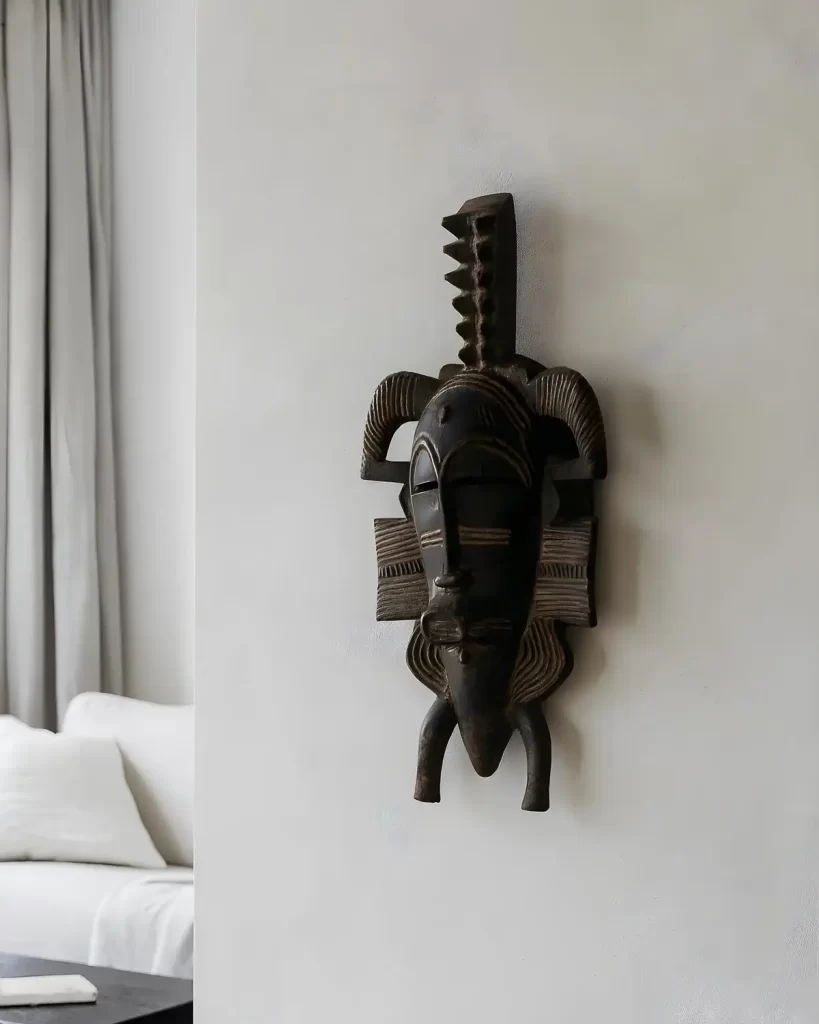
Some of the major styles and their meaning:
- Baule masks from Ivory Coast – Refined human features that suggest beauty ideals and spiritual aspirations, often used in coming-of-age ceremonies
- Senufo masks also from Ivory Coast – Geometric and powerful, used in secret societies and spiritual practices
- Fang masks from Gabon – Elongated and otherworldly, designed to represent ancestral spirits and facilitate communication with the divine
- Songye masks from the Democratic Republic of Congo – Commanding and intense, used in rituals that required the wearer to embody spiritual power
How to approach them: Research. Learn. Understand. Ask yourself: Where is this from? What was its purpose? Why did it matter? When guests ask about your mask—and they will—you’re not sharing a purchase story. You’re sharing knowledge. You’re honoring sacred art.
You May Also Like: Traditional African Masks: 7 Icons That Steal the Spotlight
The home decor showpieces that matter aren’t the ones that look the most impressive. They’re the ones that carry meaning.
Objects made by hands that knew their craft. Pieces that served purposes in the lives and communities that created them. When you choose them, you’re creating a home that speaks. A space that honors the people that made these objects possible. A room that says something true about who you are and what you value.
More showpieces to love: 15 Living Room Showpiece Picks, Guaranteed to Impress

